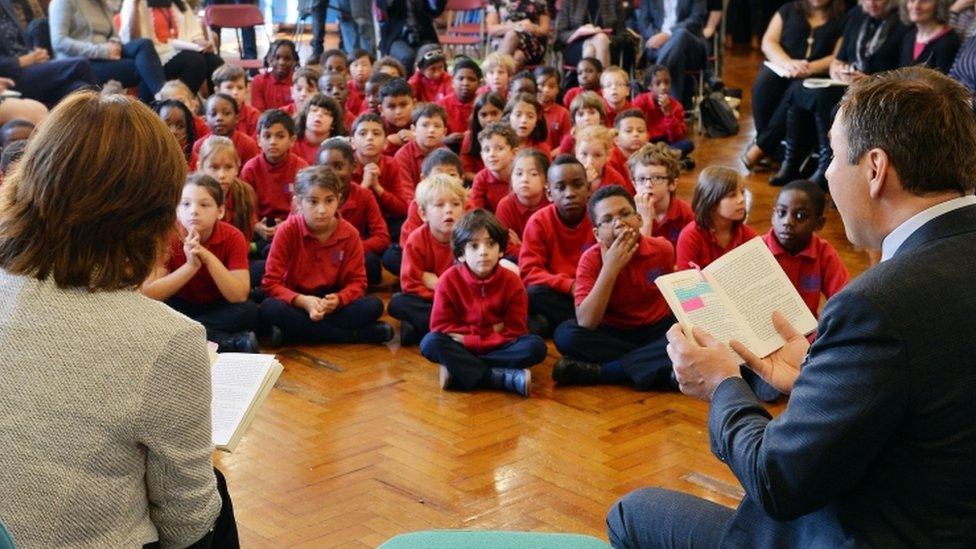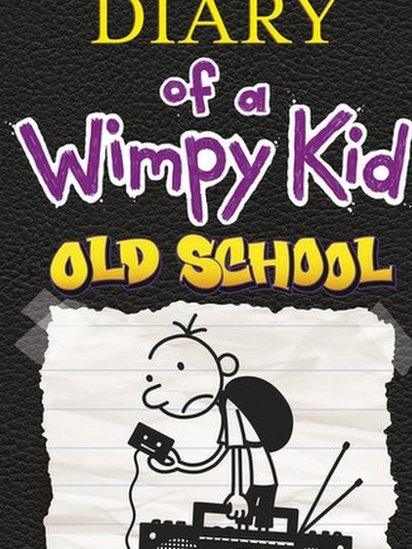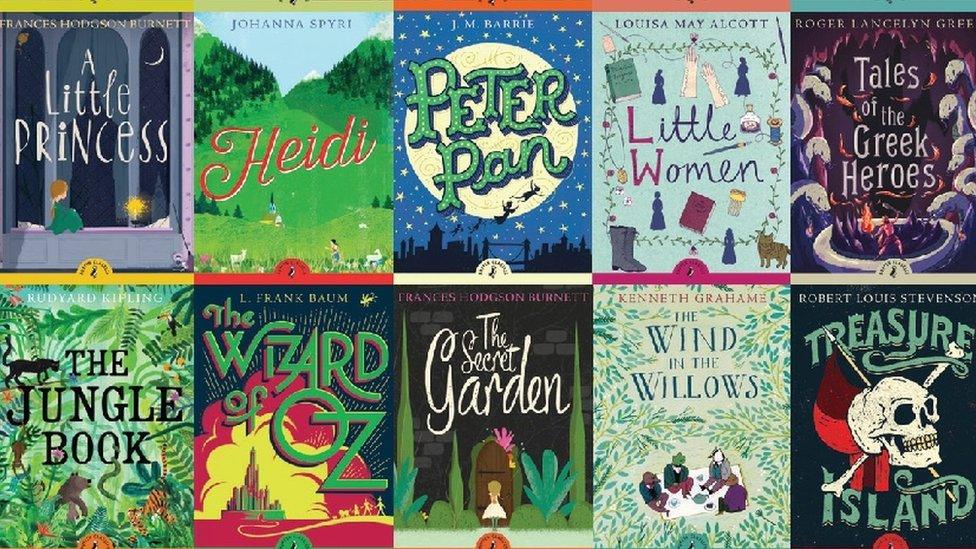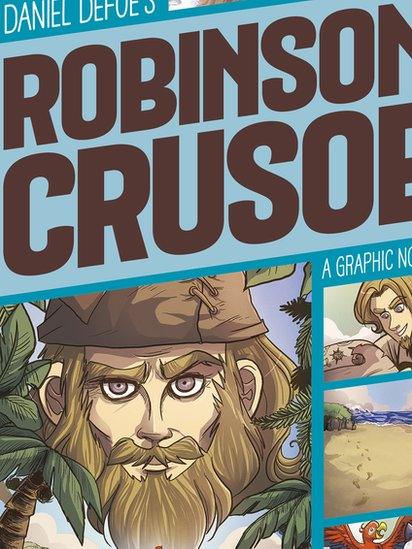Do children still need to read the classics of English literature?
- Published

David Walliams backed the Education Secretary's campaign to get more children reading the classics
Education Secretary Nicky Morgan has called for a return to the classics of English literature in schools, but are they still relevant and appropriate for today's children?
A quick scan of any list of the most read children's books will reveal that today's youngsters are growing up in a very different literary landscape to their parents.
Gone from bedroom bookshelves are the Famous Five, the Chronicles of Narnia, and the adventures of the Swallows and Amazons.
And in their places are the likes of Jeff Kinney's Diary of a Wimpy Kid, the complete and ever-growing works of David Walliams and Liz Pichon's Tom Gates series.
Only the prolific Roald Dahl remains sandwiched between the bookends by these newer arrivals at the top of the literary pops.
And as for the 19th Century classics of English literature, such as Emily Bronte and Charles Dickens, many children simply have not heard of them.
One south London mother, Geri Cox, explained how her daughter's Year 5 class was to be named this year after the literary giant, Jane Austen.
But the class teacher soon had second thoughts when the suggested name was met with blank stares.
"My daughter came back and said they weren't going to be called Austen class anymore, because not many people had heard of her. Instead the class was to be named Rowling, after the Harry Potter author, and she had to do a project about her instead.
"And she goes to a very high achieving school indeed."
Ms Morgan argues that children will miss out if they do not have access "to our incredibly rich heritage of world-famous children's literature".

The tenth book in the Diary of a Wimpy Kid series is about to be released
But perhaps these more modern books are able to do the job of lighting the literary touch paper just as well.
A spokesman for Penguin Random House Children's books said: "Millions of children are readers because of Diary of a Wimpy Kid and Jeff Kinney's work is perfect for turning reluctant readers on to books.
"With 50% words and 50% cartoons, the books are 100% hilarious and children agree."
Titles in the series have won numerous 'favourite book' awards and are frequently among the most borrowed children's books in UK libraries.
Also, interestingly, the first few Wimpy Kid books were made available to download online for free before they came out in book form.
According to Seni Glaister, children's books specialist and co-founder of The Book People, the mix of type-face and art is a big part of the attraction.
"It means the text does not look daunting and that it will therefore appeal to hesitant, reluctant or timid readers."
But she adds: "I do think the popularity is actually much more to do with the content, the story, than it is do with a trend for the aesthetic.
"The children in all of these books are often in grave peril and the grown-ups tend to be either absent, evil or weak in comparison to the young protagonists."
'Bad villains'
She adds: "You really don't need to look any further than Dahl to understand that there is nothing new here in taste or style!

Puffin has re-issued a collection 20 classics of children's literature
"Walliams does it particularly well and I have absolutely no doubt that these books would have found their market with or without Walliams' celebrity status."
However, the fact that Puffin Books re-issued a series of 20 classics of children literature earlier this year, suggests these books have an enduring appeal - even if it is the parents buying them on behalf of their children.
Publisher Shannon Cullen said: "From Treasure Island and Heidi to the Secret Garden and The Wizard of Oz, these books have been firm favourites of children across the generations and their striking new jackets will ensure they remain popular for many years."
Cassie Buchanan, head teacher at Charles Dickens Primary School in Southwark, which hosted a visit from Walliams and Ms Morgan this week, argues the classics sit easily in the primary school curriculum as long as the approach is right.
"The older children here are reading a range of different classics," she says.
"We read a version of Crime and Punishment and we have covered Antigone with Year 5 and Year 6 pupils."
Graphic novels
She adds: "We do a lot of Dickens. He lived on this street and the children learn about him and where he grew up. And after all they are very good stories.
"We need to use a mix of abridged versions that don't lose the richness of the language, but we are also exposing children to excerpts of Bleak House in class."

Turning classic stories into graphic novels can make them more accessible.
Fortunately, many skilfully shortened versions of the classics exist, says Miles Stevens-Hoare, managing director of Capstone International Publishers.
His company produces graphic novel versions of such classics as Jules Verne's 20,000 League Under the Sea and Daniel Defoe's Robinson Crusoe, for example.
But Paul Clayton, director of the National Association for the Teaching of English, says supplying young people with cheap classics will do little to develop the motivation to read.
"In 2001, all 4,500 secondary schools in Britain, along with 1,400 schools overseas, received 250 hard-backed Everyman Classics totally free of charge.
"However, many of these sets still remain on school library shelves (assuming schools have retained their libraries) unopened and unread.
"There is now so much variety in reading matter and, with the arrival of electronic reading devices, so much choice in how to access material for reading.
"Perhaps Nicky's efforts might be more effectively deployed encouraging organisations to broaden access both to the widest range of fiction and the technology to read it."